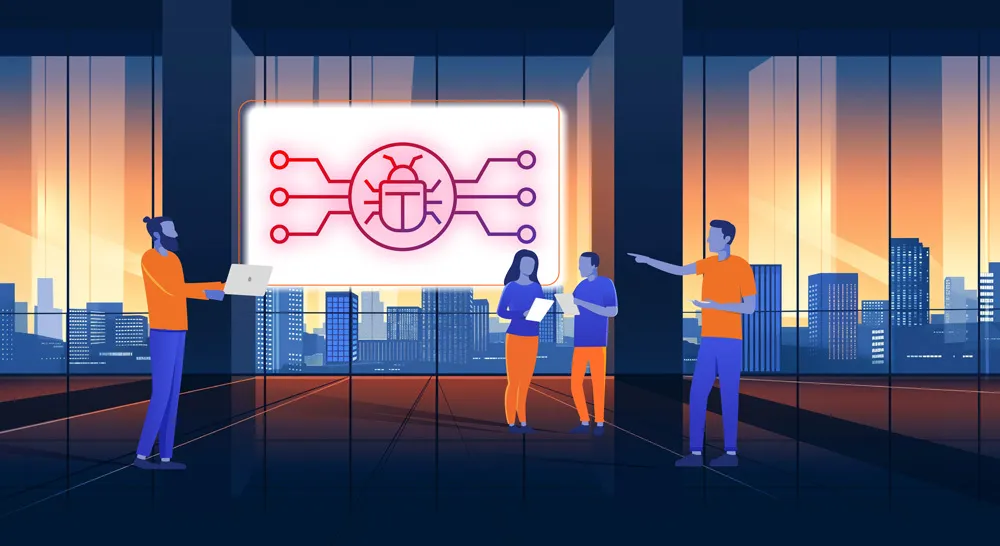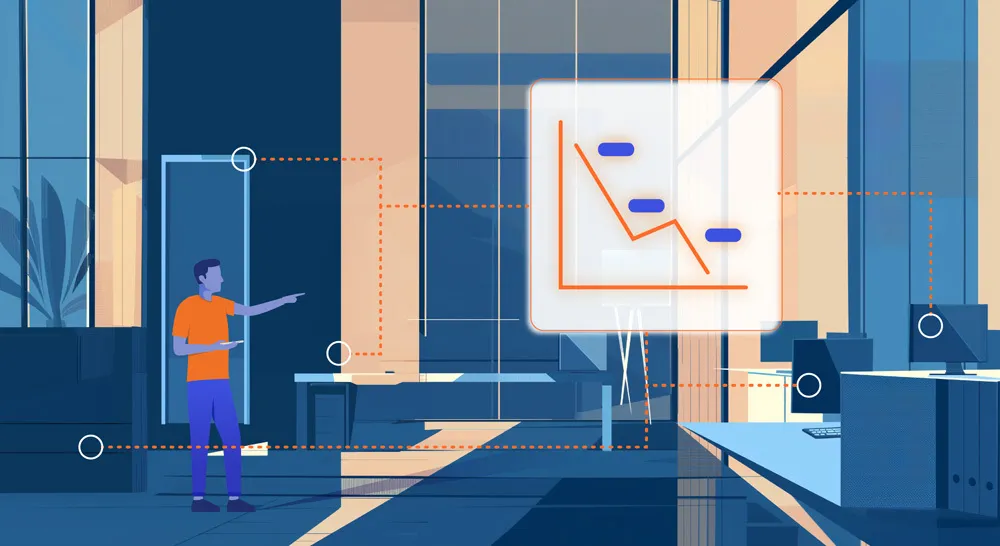
Redefining Global Security with Zero Trust
In the rapidly evolving landscape of cybersecurity, traditional perimeter-based defenses are no longer sufficient. As businesses expand globally, embrace remote work, and adopt cloud-based services, the need for a more dynamic and resilient security model has become critical. Enter Zero Trust Architecture (ZTA)—a security paradigm that has revolutionized the way organizations protect their digital assets. This blog delves into the evolution of Zero Trust, its importance in the modern digital age, and the complexities of implementing it on a global scale.
What is Zero Trust Architecture?
Zero Trust is a security framework that operates on the principle of “never trust, always verify.” Unlike traditional security models that focus on defending the perimeter of an organization’s network, Zero Trust assumes that threats can come from both outside and inside the network. As a result, no entity—whether inside or outside the network—is automatically trusted.
Key components of Zero Trust Architecture include:
- Micro-Segmentation: Breaking down the network into smaller, isolated segments to minimize the risk of lateral movement by attackers.
- Identity and Access Management (IAM): Ensuring that only authenticated and authorized users can access specific resources.
- Continuous Monitoring and Validation: Constantly monitoring all network activity and validating access requests in real-time.
- Least Privilege Access: Granting users and devices the minimum level of access necessary to perform their functions.
The Evolution of Zero Trust: A Brief History
The concept of Zero Trust was first introduced by Forrester Research in 2010, but it gained significant traction in the following years as the cybersecurity landscape grew more complex. The rise of cloud computing, remote work, and mobile devices blurred the boundaries of the traditional network perimeter, rendering legacy security models inadequate.
In response to these challenges, Zero Trust evolved from a theoretical model to a practical approach adopted by organizations worldwide. Today, it is endorsed by leading cybersecurity bodies, including the National Institute of Standards and Technology (NIST), which published a comprehensive framework for implementing Zero Trust.
Why Zero Trust is Essential in a Borderless Digital World
The globalization of business operations and the widespread adoption of digital technologies have created a borderless digital environment. In this context, the risks associated with traditional security models have become more pronounced:
- Increased Attack Surface: As organizations expand globally, their digital footprint grows, providing more entry points for attackers.
- Remote Work and BYOD: The shift to remote work and the use of personal devices for business purposes (Bring Your Own Device, BYOD) further complicate security management.
- Cloud Adoption: The migration to cloud services introduces new security challenges, as sensitive data is stored and accessed outside the traditional network perimeter.
Zero Trust addresses these challenges by focusing on securing every aspect of the digital environment—users, devices, networks, and data—regardless of their location. By implementing Zero Trust, organizations can ensure that all access requests are verified, and that sensitive data is protected from both internal and external threats.
Implementing Zero Trust on a Global Scale: Challenges and Best Practices
While the principles of Zero Trust are straightforward, implementing it on a global scale presents several challenges:
1. Regulatory Compliance
Different regions have varying regulations regarding data protection and privacy, such as GDPR in Europe and CCPA in California. Ensuring that a Zero Trust Architecture complies with these regulations across multiple jurisdictions can be complex.
Best Practice: Organizations should work closely with legal and compliance teams to align their Zero Trust strategies with local regulations. Implementing data localization policies and using encryption can help mitigate compliance risks.
2. Integration with Legacy Systems
Many organizations have existing security infrastructures that are deeply embedded in their operations. Transitioning to a Zero Trust model without disrupting business processes can be challenging.
Best Practice: A phased approach to Zero Trust implementation allows organizations to gradually integrate new technologies while maintaining the functionality of legacy systems. Start with high-risk areas and expand the Zero Trust perimeter over time.
3. Cultural and Organizational Change
Zero Trust is not just a technological shift; it requires a change in mindset across the organization. Employees must be educated on the importance of security and the reasons behind new policies and procedures.
Best Practice: Invest in training and awareness programs that emphasize the role of every individual in maintaining security. Leadership should champion the Zero Trust initiative to ensure buy-in at all levels.
4. Managing Global IT Infrastructure
Organizations operating on a global scale must manage diverse IT environments with varying levels of maturity. Implementing a uniform Zero Trust strategy across different regions can be challenging.
Best Practice: Leverage cloud-based security solutions that offer scalability and flexibility, allowing organizations to apply consistent security policies across their global infrastructure. Employ a unified management platform to monitor and enforce Zero Trust policies globally.
Why CYPFER?
When it comes to implementing Zero Trust Architecture, having a trusted partner with deep expertise is crucial. CYPFER is at the forefront of cybersecurity, offering comprehensive solutions that are tailored to the unique needs of global organizations. Our team of experts understands the complexities of deploying Zero Trust on a global scale and can guide your organization through every step of the process—from assessing your current security posture to implementing advanced security measures and ensuring compliance with local and international regulations. With CYPFER, you gain a partner that is committed to your security, providing 24/7 support and a recovery-led approach that ensures your business remains resilient in the face of evolving threats.
The Future of Zero Trust Architecture
As the digital landscape continues to evolve, Zero Trust will play an increasingly central role in cybersecurity strategies. Advances in artificial intelligence (AI) and machine learning (ML) are expected to enhance Zero Trust capabilities, enabling more precise and automated threat detection and response.
Additionally, as organizations become more interconnected, the concept of Zero Trust will extend beyond individual enterprises to encompass entire supply chains and ecosystems. This evolution will require greater collaboration between businesses, governments, and technology providers to establish trust frameworks that are resilient, scalable, and adaptable to emerging threats.
Conclusion
Zero Trust Architecture represents a paradigm shift in cybersecurity, one that is well-suited to the challenges of a borderless digital world. By adopting Zero Trust, organizations can move away from outdated security models and embrace a more dynamic and resilient approach to protecting their digital assets.
Implementing Zero Trust on a global scale is not without its challenges, but with careful planning, strategic investments, and a commitment to continuous improvement, organizations can successfully navigate this transformation. As the threat landscape continues to evolve, Zero Trust will remain a critical component of any comprehensive cybersecurity strategy.
Your Complete Cyber Security Partner:
Every Step, Every Threat.
At CYPFER, we don’t just protect your business—we become part of it.
As an extension of your team, our sole focus is on cyber security, ensuring your peace of mind. From incident response and ransomware recovery to digital forensics and cyber risk, we integrate seamlessly with your operations. We’re with you 24×7, ready to tackle threats head-on and prevent future ones.
Choose CYPFER, and experience unmatched dedication and expertise. Trust us to keep your business secure and resilient at every turn.

Get Cyber Certainty™ Today
We’re here to keep the heartbeat of your business running, safe from the threat of cyber attacks. Wherever and whatever your circumstances.
Contact CYPFER





